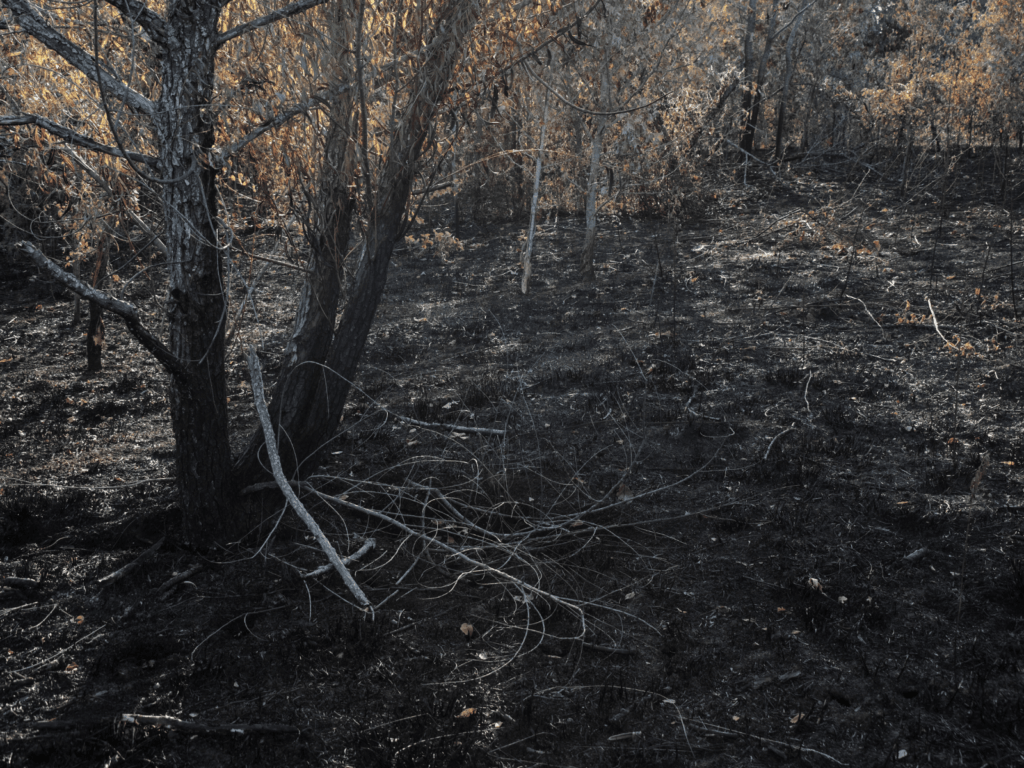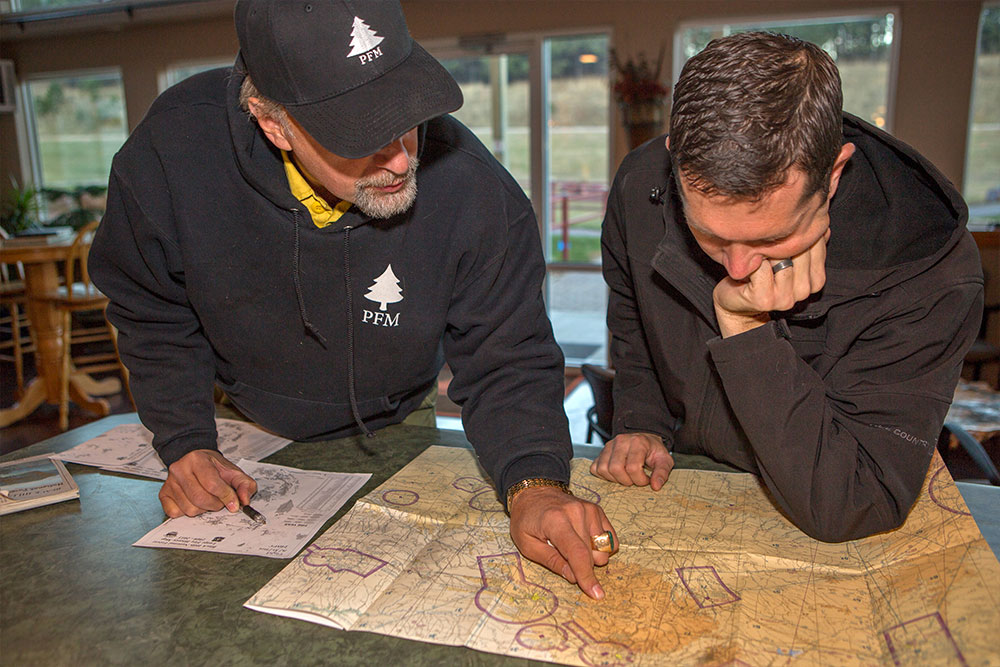![]()
After an intimate brush with wildfire, property owners are exposed to many complex problems. Whether you endured bodily harm in the form of smoke inhalation or burns, lost your home, or experienced the loss of natural resources around you, there is likely some way or another that a close encounter with an uncontrolled burn has impacted you. Don’t be left looking for answers after a wildfire–call in the professionals for a wildfire impact assessment and see if you are entitled to claims for damages. However, before you can make a claim, you need to understand what a wildfire damage assessment is and how it can work for you.
The team at Wildfire Pros offers lived experience in the world of fire–in everything from forest management to expert consultation for litigation. You don’t have to feel powerless in the aftermath of a wildfire–reach out to Wildfire Pros to learn your rights and options for the next steps on the recovery journey!
A Wildfire Damage Assessment is a systematic evaluation of the effects of a wildfire on landscapes, structures, and ecosystems. This crucial process involves expert analysis to quantify the extent of damage, identify vulnerable areas, and prioritize recovery efforts. The assessment not only aids in immediate response and resource allocation but also contributes valuable data for future risk mitigation.
Wildfire forensics is the investigative process that follows a wildfire, aiming to determine its origin, cause, and contributing factors (from the National Institute of Justice). This field combines scientific analysis, forensic techniques, and expert knowledge to unravel the complexities of wildfire incidents. Understanding the root causes of wildfires is vital for implementing preventive measures and holding responsible parties accountable.

Developing and implementing a robust Wildfire Impact Assessment is imperative to address the increasing challenges of wildfires. This system integrates expert site evaluation, advanced technologies, data analytics, and expert knowledge to enhance the efficiency of impact assessments, response coordination, and long-term planning.
In the aftermath of a wildfire, the visible scars on the landscape often tell only part of the story. The true extent of the damage goes beyond what meets the eye, impacting not only buildings but also the fabric of our communities. To fully comprehend the aftermath of a wildfire and safeguard your future, a professional wildfire damage assessment is not just advisable; it's imperative. Here are some of the kinds of damages wildfires can cause.
The immediate and tangible consequences of wildfires are often the charred remains of buildings, leaving a stark reminder of the destructive power of these natural disasters. A professional wildfire damage assessment goes beyond the obvious, meticulously evaluating your property’s structural integrity, safety concerns, and potential long-term impacts.
Even if your structure survives a close encounter with a wildfire, the battle is not won. Wildfire smoke, with its insidious tendrils, can infiltrate every nook and cranny, causing damage that may not be immediately evident. A comprehensive expert assessment can uncover hidden smoke damage, ensuring that every aspect of your property is accounted for.
The threat of radiant heat during a wildfire can lead to secondary damages that may not be apparent at first glance. Professional assessments delve into the intricacies of radiant heat damage and smoke infiltration, providing a nuanced understanding of your property’s potential risks and actual damage.
The aftermath of a wildfire often brings with it a heightened risk of post-fire flooding as rain falls on badly burned soils. Firefighting practices, including firing operations, lead to flooding and contamination. Professional consultants are equipped to identify hydrological risk, flood mitigation, and extant water damage, ensuring a comprehensive evaluation of the aftermath and aiding in effective restoration and mitigation strategies.
Wildfires extend their reach beyond buildings, wreaking havoc on the natural environment. Loss of topsoil and vegetation impacts the ecological balance and poses long-term risks to your property. A professional wildfire damage assessment considers the broader environmental implications, offering insights into the extent of damage and strategies for rehabilitation.
The pervasive impact of wildfires extends to the air we breathe. Smoke and pollutants released during a wildfire can have severe health consequences, leading to disease and respiratory issues. A thorough assessment includes evaluating air quality issues and providing crucial information for safeguarding the health and well-being of those affected.

There is no more critical time to lean on your community and surviving resources than after a wildfire touches your life. Here are some of the top reasons why you should consult with Wildfire Pros after a devastating wildfire:
Wildfire Pros brings a trained eye and technical expertise to the assessment process. They go beyond the surface, uncovering hidden damages and potential risks that untrained eyes might miss. This comprehensive understanding is the foundation for effective recovery and risk mitigation strategies.
A professional wildfire damage assessment provides valuable data for informed decisions. Whether you are an individual property owner, part of a community, or a policymaker, this data is instrumental in planning for the future, implementing preventative measures, and securing resources for recovery.
Navigating the complexities of insurance claims and legal options in the aftermath of a wildfire can be daunting. We are not lawyers and do not give legal advice. We are professional expert consultants and witnesses. Our assessment not only provides the evidence needed for claims but also stands as a credible source of information in legal matters, ensuring a smoother process for all parties involved.
Understanding the full scope of wildfire damage is the first step toward building resilience. Professional assessments address immediate concerns and contribute to long-term planning and risk reduction. This foresight is crucial for communities and individuals looking to rebuild and thrive in the face of future challenges.
The road to recovery begins with knowledge in the aftermath of a wildfire. A professional wildfire impact assessment is not just a service; it's a lifeline that can guide you through the complexities of recovery, help you reclaim what was lost, and fortify your defenses against future uncertainties. Don't let less tangible losses go unaccounted for—consult with professionals with the expertise to unveil the true aftermath of a wildfire. Your future and that of your community depend on it.